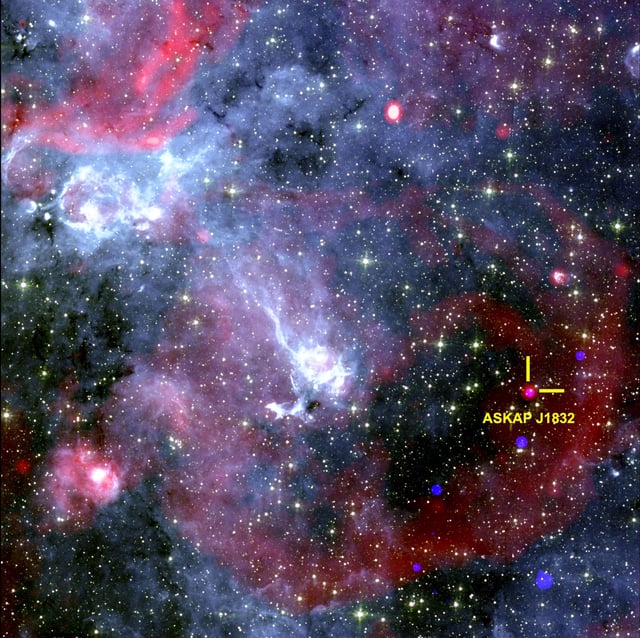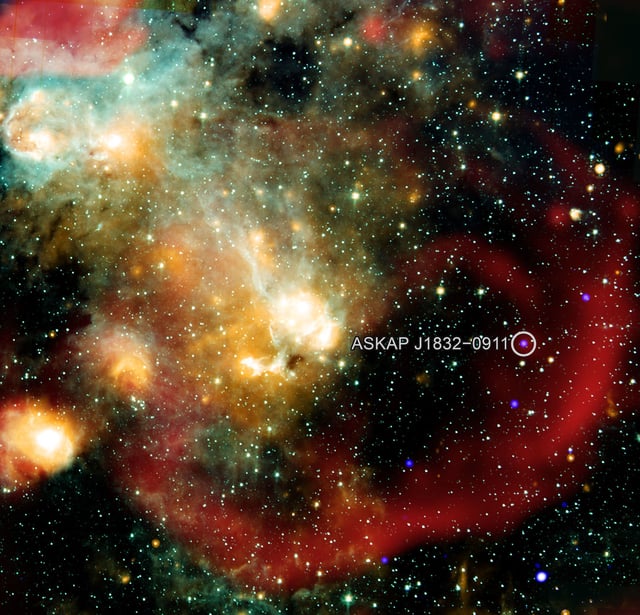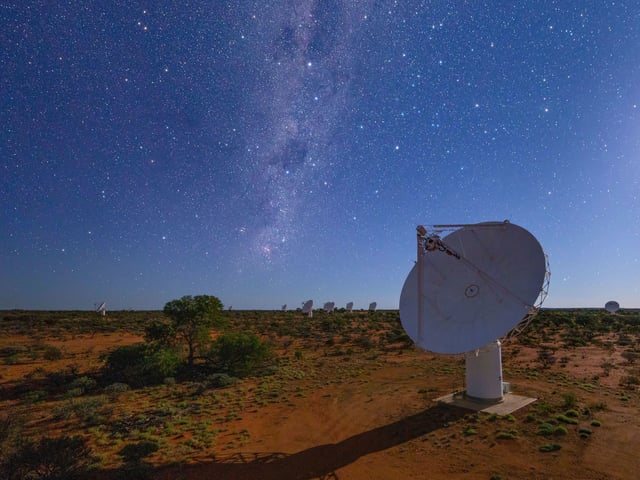Overview
- The object is classified as a long-period transient, a newly identified class of sources with only ten documented examples since 2022.
- It emits simultaneous two-minute pulses of radio waves and X-rays every 44 minutes, making it the first LPT observed in X-ray wavelengths.
- ASKAP J1832−0911 lies about 15,000 light-years away in the Milky Way, detected by CSIRO’s ASKAP telescope on Wajarri Country and NASA’s Chandra X-ray Observatory.
- Its month-long hyperactive phase began last November and has since subsided, with emissions tapering off over six months and no X-rays detected outside that window.
- Proposed explanations—a magnetar or a magnetized white dwarf binary—do not fully explain the correlated emissions, suggesting the need for new astrophysical models.


